Minnesota Drought Update

As
of Thursday's update of the Drought Monitor, 8% of the state remains
under moderate drought. All of that is across parts of northwestern
Minnesota. Meanwhile, 32% of the state (mainly across western areas) are
under at least abnormally dry conditions.

Even
though this drought has been in the works for over a month, you can see
there are areas across parts of northwestern and southwestern Minnesota
are at least 2" below average in the rainfall department so far this
July.
_______________________________________________
Dry Weather Continues Until Midweek
By D.J. Kayser, filling in for Paul Douglas
The sprinklers have been getting some use in my neighborhood this July, as it has been a fairly dry month across Minnesota with many areas reporting below average rainfall. The driest areas of the state have been in western Minnesota, where some spots are reporting 2-4” rainfall deficits. The good news is that soil moisture hasn't taken a big hit so far, with less than 20% of topsoil and subsoil moisture supplies rated either short or very short across the state as of last week.
Conditions are worse as you head west, however. The USDA reports that at least two-thirds of the topsoil moisture conditions in North Dakota, South Dakota and Montana are rated short or very short. The U.S. Drought Monitor now has 7.6% of North Dakota and 11.9% of Montana in exceptional drought - the highest category.
While an isolated storm is possible today – mainly across northern Minnesota - the next chance of rain won’t work in until the middle of the week in the Twin Cities. Behind that midweek rain, highs will settle into the 70s.
By D.J. Kayser, filling in for Paul Douglas
The sprinklers have been getting some use in my neighborhood this July, as it has been a fairly dry month across Minnesota with many areas reporting below average rainfall. The driest areas of the state have been in western Minnesota, where some spots are reporting 2-4” rainfall deficits. The good news is that soil moisture hasn't taken a big hit so far, with less than 20% of topsoil and subsoil moisture supplies rated either short or very short across the state as of last week.
Conditions are worse as you head west, however. The USDA reports that at least two-thirds of the topsoil moisture conditions in North Dakota, South Dakota and Montana are rated short or very short. The U.S. Drought Monitor now has 7.6% of North Dakota and 11.9% of Montana in exceptional drought - the highest category.
While an isolated storm is possible today – mainly across northern Minnesota - the next chance of rain won’t work in until the middle of the week in the Twin Cities. Behind that midweek rain, highs will settle into the 70s.
_______________________________________________
Extended Twin Cities Forecast
SUNDAY: Isolated northern MN storms. Otherwise mainly sunny. High 84. Low 66. Chance of precipitation 10%. Wind SE 3-8 mph.
MONDAY: Sunny skies. Feeling muggy. High 84. Low 67. Chance of precipitation 0%. Wind SW 3-8 mph.
TUESDAY: Partly sunny. Afternoon storms. High 85. Low 65. Chance of precipitation 40%. Wind SW 5-10 mph.
WEDNESDAY: Lingering storms. A touch cooler. High 80. Low 60. Chance of precipitation 20%. Wind N 5-10 mph.
THURSDAY: Isolated storms. Otherwise sunny. High 76. Low 60. Chance of precipitation 20%. Wind NE 3-8 mph.
FRIDAY: A few pop-up afternoon storms. Otherwise sunny. High 77. Low 59. Chance of precipitation 20%. Wind E 3-8 mph.
SATURDAY: Sunny start. Some PM clouds. High 78. Low 60. Chance of precipitation 10%. Wind E 3-8 mph.
MONDAY: Sunny skies. Feeling muggy. High 84. Low 67. Chance of precipitation 0%. Wind SW 3-8 mph.
TUESDAY: Partly sunny. Afternoon storms. High 85. Low 65. Chance of precipitation 40%. Wind SW 5-10 mph.
WEDNESDAY: Lingering storms. A touch cooler. High 80. Low 60. Chance of precipitation 20%. Wind N 5-10 mph.
THURSDAY: Isolated storms. Otherwise sunny. High 76. Low 60. Chance of precipitation 20%. Wind NE 3-8 mph.
FRIDAY: A few pop-up afternoon storms. Otherwise sunny. High 77. Low 59. Chance of precipitation 20%. Wind E 3-8 mph.
SATURDAY: Sunny start. Some PM clouds. High 78. Low 60. Chance of precipitation 10%. Wind E 3-8 mph.
_______________________________________________
This Day in Weather History
July 30th
July 30th
1971:
A cool spell across Minnesota brings frost to northern Minnesota.
Freezing temperatures are reported as far south as Pipestone.
_______________________________________________
Average Temperatures & Precipitation for Minneapolis
July 30th
July 30th
Average High: 83F (Record: 100F set in 1933)
Average Low: 64F (Record: 50F set in 1971)
Average Precipitation: 0.14" (Record: 1.65" set in 1872)
Average Low: 64F (Record: 50F set in 1971)
Average Precipitation: 0.14" (Record: 1.65" set in 1872)
________________________________________________
Sunrise/Sunset Times for Minneapolis
July 30th
July 30th
Sunrise: 5:56 AM
Sunset: 8:41 PM
Sunset: 8:41 PM
*Length Of Day: 14 hours, 45 minutes and 2 seconds
*Daylight Lost Since Yesterday: ~2 minute and 19 seconds
*Next Sunrise At/After 6 PM: August 2nd (6:00 AM)
*Next Sunset At/Before 8:30 PM: August 8th (8:29 PM)
*Daylight Lost Since Yesterday: ~2 minute and 19 seconds
*Next Sunrise At/After 6 PM: August 2nd (6:00 AM)
*Next Sunset At/Before 8:30 PM: August 8th (8:29 PM)
_______________________________________________
Minnesota Weather Outlook
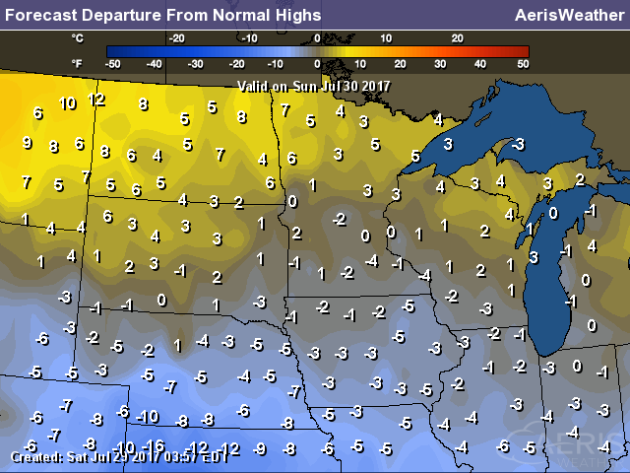
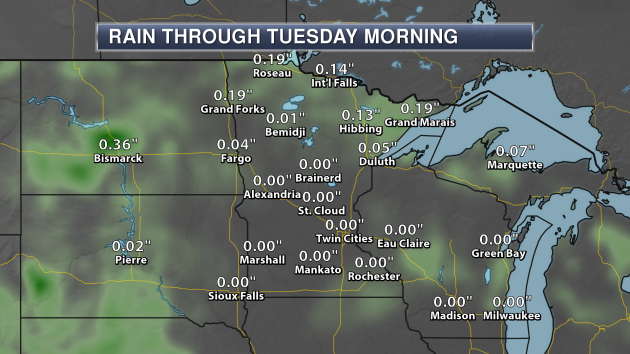
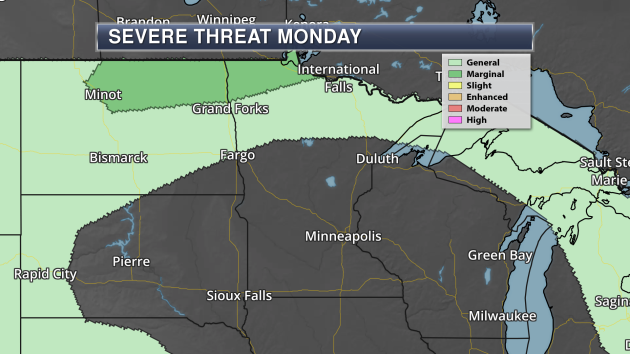
_______________________________________________
National Weather Outlook
Sunday Forecast
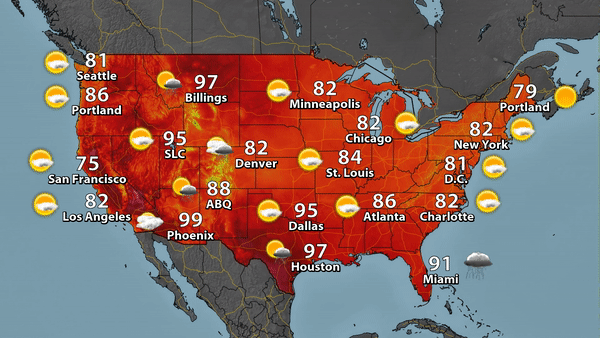
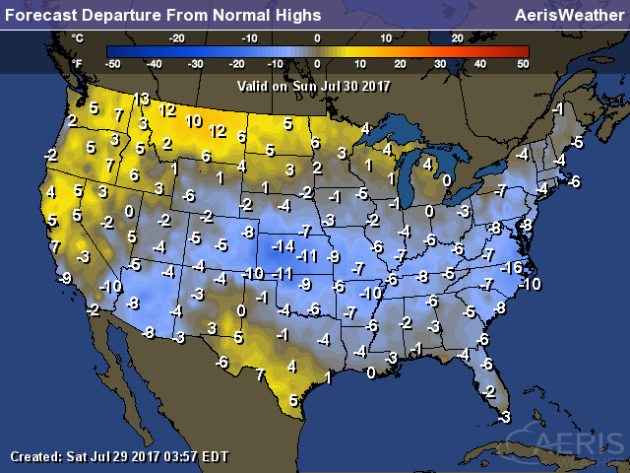
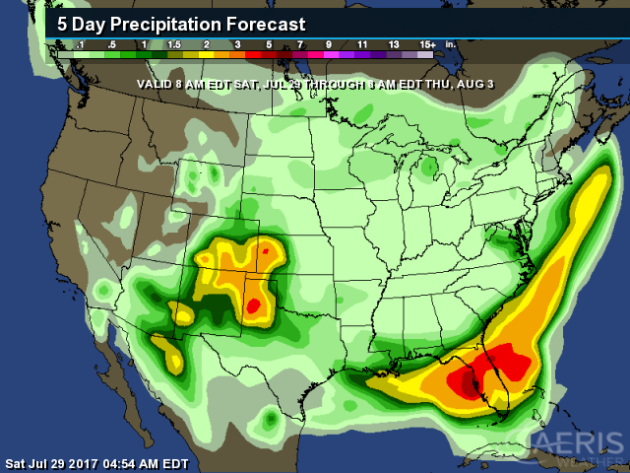
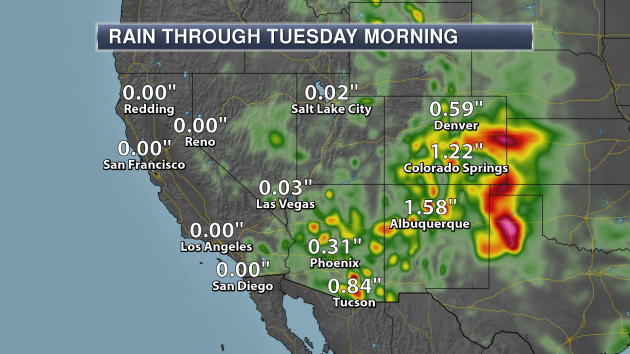
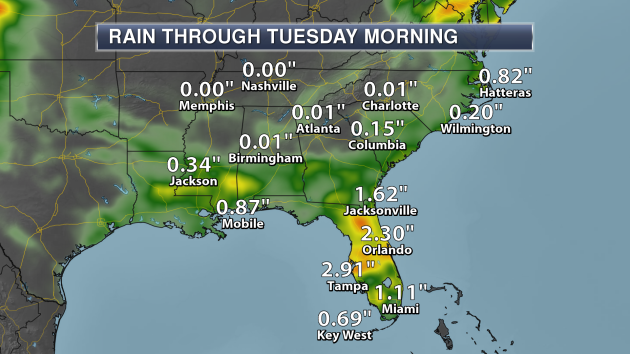
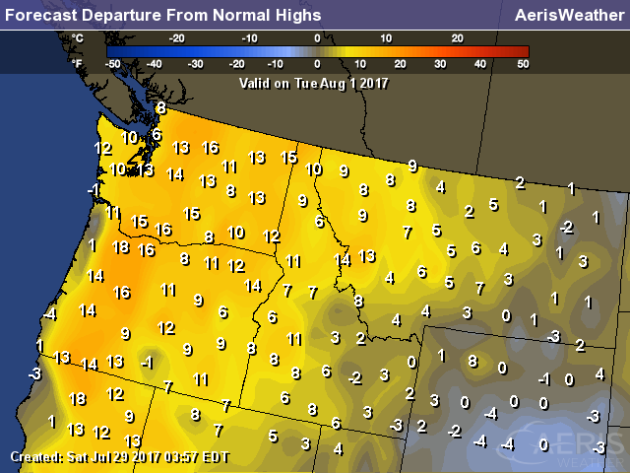
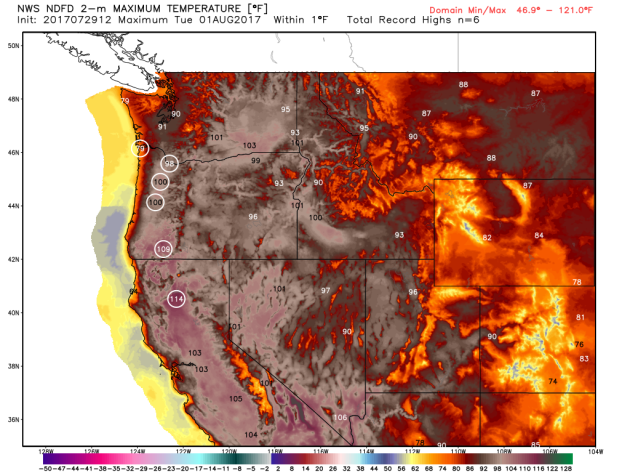
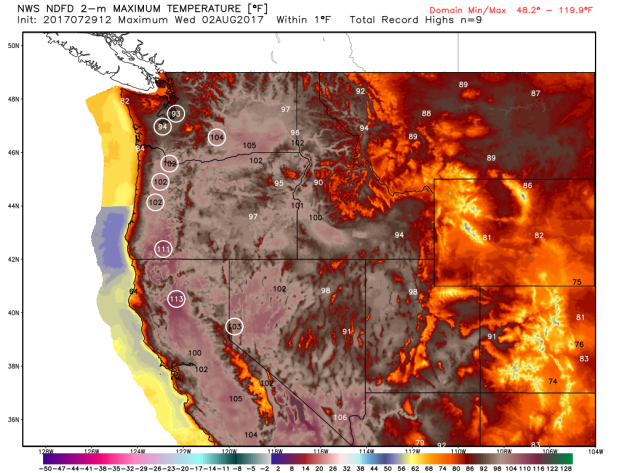
_______________________________________________
11th Lightning Death Of 2017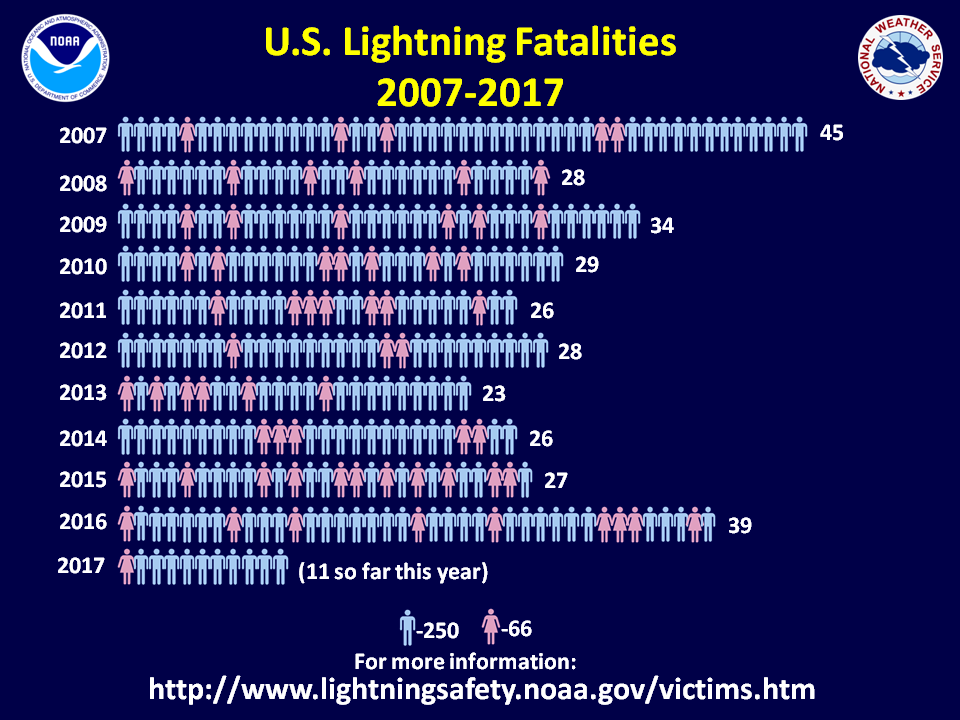
Unfortunately, the 11th lightning death of 2017 in the U.S. occurred Friday near Satellite Beach, FL. More from Florida Today: "Lightning struck two men, killing one, just north of Satellite Beach on Friday afternoon, according to the Brevard County Sheriff's Office and Brevard County Fire Rescue. Brevard County Lifeguard Captain Ashley Nolan was the first to respond to help the men. The men were hit at SPRA Park in the 400 block of State Road A1A at the end of Berkeley Street."
Must Have Weather Gear
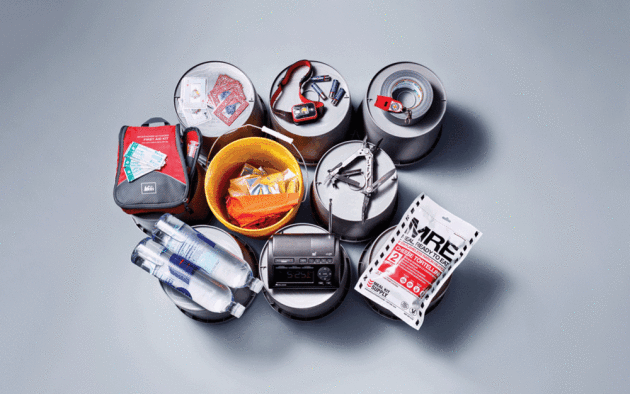
Fish More Polluted From Climate Change?
As
heavier rain events become more common with a warming climate, we could
see more fish being polluted due to increased nitrogen making it into
our waterways. More from Scientific American: "What
happens down on the farm could soon pose bigger problems downriver.
Water undergoes deadly changes when enough fertilizers seep into rivers,
lakes and streams. Algae growth explodes, oxygen levels drop and fish
either leave the waterway or suffocate. Since the 1970s, large swaths of
the Gulf of Mexico have transformed into so-called dead zones —
covering an average area about the size of Connecticut — as agricultural
runoff filters from the Mississippi River. The Chesapeake Bay and other
fisheries have struggled with the problem, too." (Image: Phytoplankton blooms off the Atlantic coast in August 2015. Credit: Joshua Stevens/NASA Earth Observatory)
The Biggest Wind Farm In The U.S. Will Be In Oklahoma
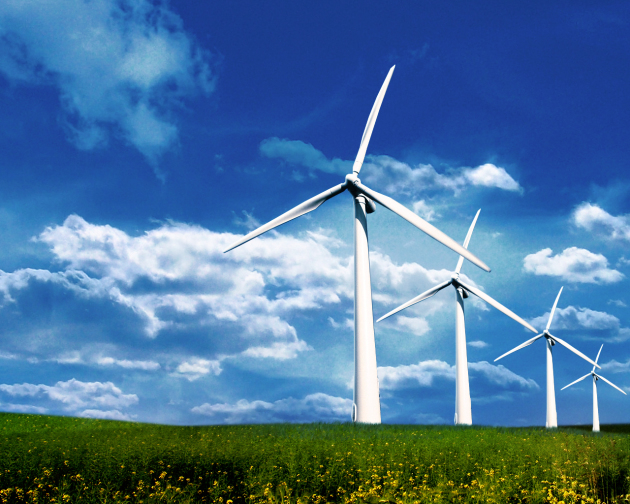
North Carolina Sees A Giant Increase In Solar Power

Record Breaking Temperatures In Miami
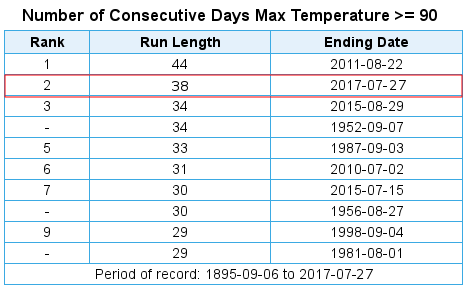
Less Drinking Water In The Future?
Algal blooms could become more frequent in the future due to climate change... and that could actually lead to less drinkable water. More from WIRED: "LAST SUMMER, SOUTHERN Florida nearly ran out of water. It wasn’t drought—actually, the opposite. The state got way too much rain, which flushed nutrients from over-fertilized farms into its canals and reservoirs. All the extra food led to a massive algal bloom, a skim of blue-green slime that smells like rotten eggs and poisons humans. Governor Rick Scott declared a state of emergency in four counties."
______________________________
Thanks for checking in and have a great Sunday! Don't forget to follow me on Twitter (@dkayserwx) and like me on Facebook (Meteorologist D.J. Kayser)!
- D.J. Kayser
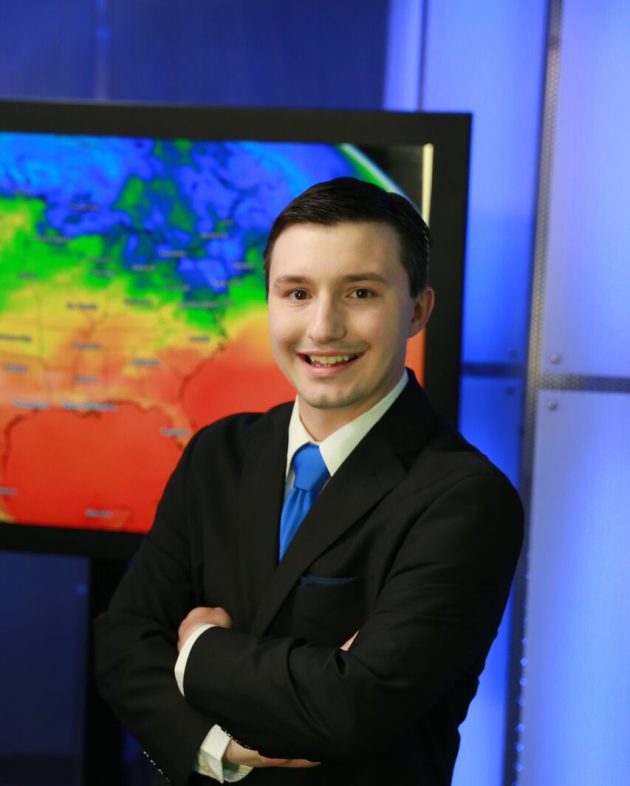
No comments:
Post a Comment